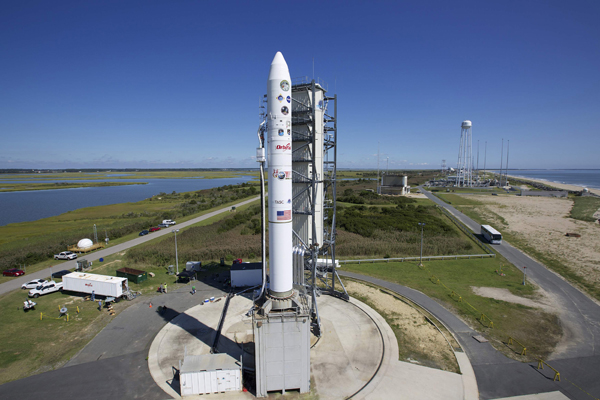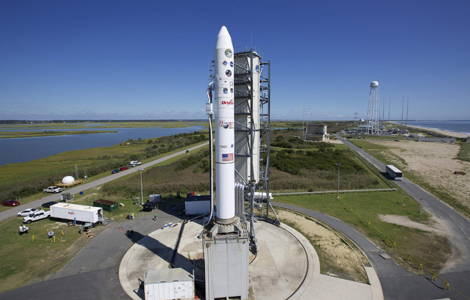NASA rocket to study moon's fragile atmosphere
Updated: 2013-09-07 00:22
(
Agencies
)
|
||||||||
NASA is headed back to the moon, this time to explore its thin atmosphere and rough dust.
The robotic spacecraft LADEE — Lunar Atmosphere and Dust Environment Explorer — will fly to the moon by way of NASA's Wallops Flight Facility in Virginia.
Liftoff is set for late Friday night or just before noon Beijing local time.
Weather permitting, the soaring Minotaur rocket should be visible along much of the US eastern coast.
LADEE will be the first spacecraft to be launched into outer space from Wallops. And it will be the first moonshot ever from Virginia in 54 years of lunar missions.
The unmanned Minotaur rocket consists of converted intercontinental ballistic missile motors. A peace treaty between the United States and Russia specifies the acceptable launch sites for those missile parts; Wallops is on that short list.
All but one of NASA's approximately 40 moon missions — most memorably the manned Apollo flights of the late 1960s and early 1970s — originated from Cape Canaveral in Florida. The most recent were the twin Grail spacecraft launched two years ago this weekend. The lone exception, Clementine, a military-NASA venture, rocketed away from Southern California in 1994.
Scientists involved in the $280 million, moon-orbiting mission say they want to examine the lunar atmosphere.
"Sometimes, people are a little taken aback when we start talking about the lunar atmosphere because we were told in school that the moon doesn't have an atmosphere," said Sarah Noble, NASA program scientist.
Most Viewed
Editor's Picks

|

|

|

|

|

|
Today's Top News
US agencies decry latest Snowden revelations
Obama rejects pressure to abandon Syria plan
Open up private market, Li says
Xi warns Abe over Diaoyu Islands
Xi, Obama discuss Asia-Pacific
Think tank seeks G20 secretariat
Smithfield deal passes US review
Speech earns praise from global leaders
US Weekly

|

|















